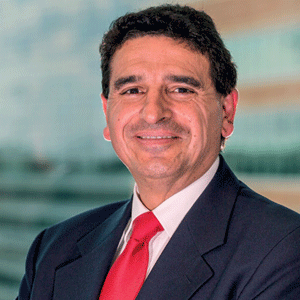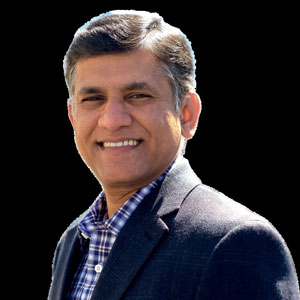THANK YOU FOR SUBSCRIBING
Editor's Pick (1 - 4 of 8)

How AI's Transformative Impact on Decision-Making is Accelerating
Rashed Haq, Vice President of Robotics, Cruise


Rashed Haq, Vice President of Robotics, Cruise
Similar applications are being used for detecting depression.
Some important learnings have emerged from these recent implementations.
It is one thing to detect disease or diagnose mental health illness, but quite another to build an effective, ongoing therapy and support plan. To bridge the gap, a Silicon Valley startup has developed an AI-powered virtual health assistant (VHA) named Woebot. Woebot combines selfhelp with traditional mental health support through the integration of AI, natural language processing and cognitive behavioral therapy to understand a wide range of questions.
For example, when told about stress at work, Woebot helps the user reframe his or her feelings to experience a more positive outlook. Clinical research psychologist Alison Darey, who invented Woebot (along with other Stanford psychologists and AI experts), reminds us that therapy in mental health is by definition conversational, hence a natural way to receive emotional support. Darey also notes that people don’t mind suspending their belief – and enjoy talking to Woebot as if it were a real therapist, even though they are aware he is virtual. VHAs are also having impact helping returning war veterans talk about PTSD.
Another approach from KineDMD leverages affordable consumer products, to help doctors make better treatment decisions for Duchenne muscular dystrophy (drawing on AI tools to gather insight from language, facial expressions and other data types). The company’s approach can be applied to any other disease that affects the brain, central nervous system or the muscles that affect muscle movement through real-time patient monitoring. And, as data from wearables is collected in real time, AI tools help to determine whether the new therapy is working.
Then there’s the Fralin Biomedical Research Institute, where physicians are working to advance a more evidence and data-based understanding of mental health and illness – by using AI to analyze brain scans.
AI Is Not A Single, Off-The-Shelf Solution, Rather A Portfolio Of Innovative Technologies That When Combined, Augment Application Processes And Human Decision-Making In Revolutionary, New Ways
This application compares what a healthy brain looks like (for certain activities or stimuli) versus what it looks like when various psychiatric disorders are present. As a result, doctors are able to diagnose illnesses such as early-stage Alzheimer’s disease years before a clinical diagnosis is made, potentially giving them an opportunity to intervene with treatment.
In conclusion The above examples show how the augmentation of human intelligence, aided by the power of AI is: Helping to garner insight from a much wider set of data sources, particularly that from real-time human behavior and interactions through language processing, cameras, sensors, IoT devices and consumer devices, including wearables. Added insight from image recognition, patterns of movement, and capabilities such as time-series analysis is delivering even deeper insight into problem solving that was never imaginable, until now. Helping to analyze problems at much deeper levels while interacting in real time with the individual, e.g., disease detection through images of the patient or images from scans of the patient, clinical trials, guiding doctor decisions in in modulating therapy, and providing coaching and therapy to patients. Healthcare offers instructive use cases that can be informative to executives in all sectors given its challenges with monitoring human behavior and patient adherence to treatment protocols and post-discharge instructions. As an integrator and services provider, we are seeing similar challenges across every industry as business leaders use insight from data to make better decisions and craft new solutions to old problems. The AI revolution impacts everything from cars that drive themselves, virtual health advisors and the deployment of virtual consumer investment assistants — to delivering highly tailored educational experiences and AI-enabled legal services that predict how a specific judge will respond to a defense strategy.











